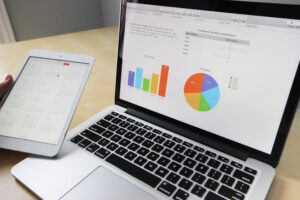Table of Contents
ToggleWhat is Silver Trading?
Silver trading is the buying and selling of precious metal silver products such as coins, bars, and other physical products in the hopes of making a profit. Silver trading can also refer to the buying and selling of silver contracts on the commodities exchanges. Silver contracts are a type of financial instrument that allows traders to speculate on silver prices without taking physical delivery of the metal itself. Silver trading often involves a variety of strategies, such as scalping, day trading, swing trading, trend following, or creating algorithmic trading strategies.
How Do You Trade Silver?
There is a wide range of silver trading strategies that traders can utilize. Each option allows investors to have exposure to silver in different ways.
1. Exchange-Traded Funds (ETFs): Exchange-Trading Funds (ETFs) are similar to stocks in that they are traded on an exchange and can be purchased through online brokers. When investors purchase shares of the ETF, the fund buys physical silver from producers and delivers it to buyers. Then, the fund sells those same silver bars to investors. As long as demand for the metal stays strong, the price of the ETF’s holdings will rise.
2. Futures Contracts: Futures contracts are a way for investors to speculate on the price of silver. A futures contract is an agreement to buy or sell silver at a predetermined price on a specific future date. Futures contracts are traded on commodity exchanges, such as the New York Mercantile Exchange (NYMEX).
3. Physical Silver: Physical silver is another popular way to invest in silver. Physical silver can be purchased in the form of coins, bars, and rounds. Popular forms of physical silver include memorabilia like American Silver Eagles, Canadian Silver Maple Leafs, and Australian Silver Kangaroos.
4. Mining Stocks: Mining stocks are another way to invest in silver. Mining stocks represent ownership in a silver mining company. The value of a mining stock is directly related to the company’s performance which is impacted by both the value of the silver and corporate management aspects.
Is Trading Silver Profitable?
Trading silver can be profitable. Of course it there are many facets to understanding to the profitability of trading silver. Silver value has grown significantly over the last decade from $14.60 per ounce in November 2015 to $24.45 per ounce at the end of 2022. Trading silver can potentially be profitable depending on how people invest. Still, investors must be aware of the risks associated with trading silver, such as its price volatility.
Like most commodities, silver’s volatility makes it difficult for traders to predict how much it will cost. The price of silver is affected by factors like demand, supply, and speculation. Because of this, silver prices tend to fluctuate quite dramatically over short periods of time. On average, however, silver tends to move up slowly over long periods of time.
The value of silver depends largely on what it is being used for. If people want to use silver to manufacture products, such as jewelry, coins, and electronics, then the price of silver will rise. When investors buy silver, they hope to sell it later at a profit. As a result, the price of silver rises when investors purchase it. Conversely, when investors sell silver, the price falls.
How to Trade or Invest in Silver
1. Determine Your Investment Strategy: Before investing in silver, it is important to determine your investment goals. For example, are you looking to invest in silver for short-term gains, or are you looking to invest in silver as a long-term investment?
2. Research Silver Prices and Trends: Research the current price of silver and price movement trends. Analyze the current market conditions and the silver supply and demand trends. You may also want to look for correlations between silver prices and economic and political events.
3. Choose Your Investment Vehicle: Invest using the strategies you are most comfortable with, whether that’s buying physical silver, silver coins, silver futures, silver ETFs, silver stocks, and other silver investments.
4. Consider Costs and Fees: Consider the costs and fees associated with each investment vehicle. For example, if you buy physical silver, you must factor in the cost of storage and insurance. Silver has a high price but a low value-to-mass ratio making it impractical for most people to hold large amounts of it.
5. Monitor and Adjust Your Position: Monitor your position and adjust according to the changing market conditions. Be willing to adjust your position when needed to maximize returns.
FAQ
How to buy and trade silver?
1. Open an account with a broker that can trade silver. You can open an account with a broker online or over the phone.
2. Fund your account money to purchase the silver you want.
3. Research the silver market to determine when is a good time to buy and when to sell.
4. Place an order to buy silver at the current market price.
5. Monitor the market and keep track of the price of silver so you can sell it when it reaches a higher than the purchase price.
6. When you are ready to sell your silver, place a sell order at the current market price.
7. Once your order is filled, and your silver is sold, the proceeds will be deposited into your account.
What is the best time to trade silver?
The best time to trade silver is typical during the London/European trading session. However, silver prices can be volatile, and market conditions may change quickly, so it is important to stay updated on news and economic events that could impact the silver price.
Which is better to trade gold or silver?
Choosing various precious metals to trade depends on your individual trading strategy and risk tolerance. Generally, gold is seen as a safe-haven asset and is more stable than silver, which is more volatile and subject to large price swings. Therefore, traders with a low-risk tolerance may prefer gold, while those looking for higher returns may prefer silver.




